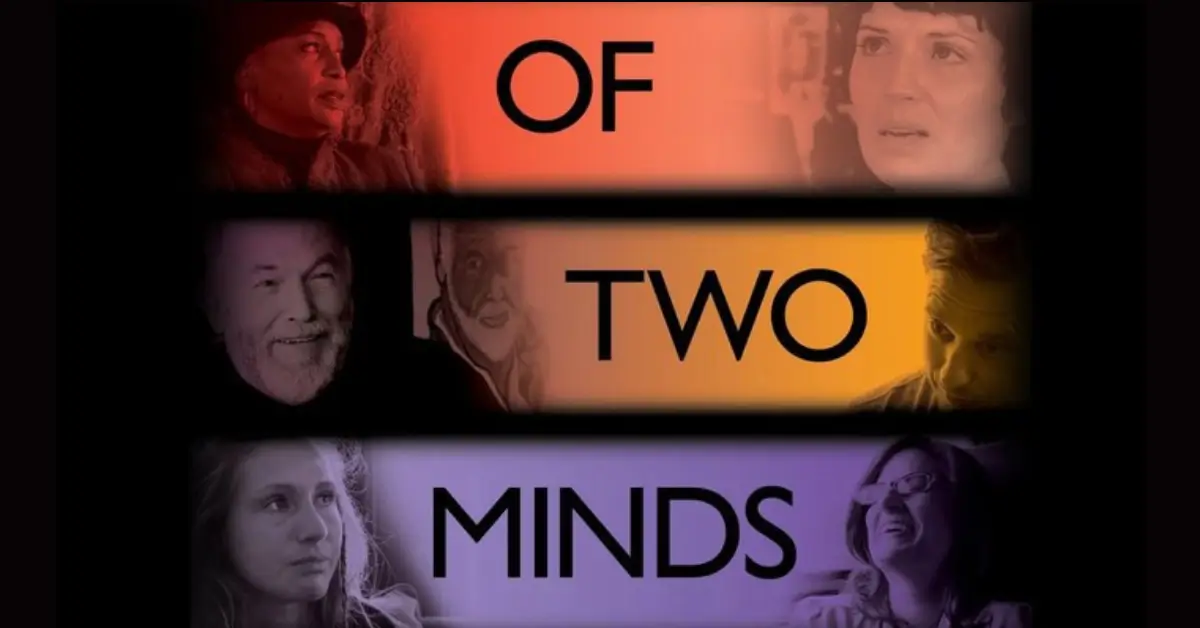Of Two Minds: An Intimate Look at Bipolar Disorder on Screen
In the landscape of mental health documentaries, “Of Two Minds” stands as a remarkably candid and compassionate exploration of bipolar disorder. Unlike dramatized fictional portrayals, this 2012 documentary takes viewers into the authentic lived experiences of people navigating the extraordinary highs and devastating lows of this often misunderstood condition. By interweaving multiple personal narratives, the film creates a textured, nuanced portrait that challenges stereotypes and invites viewers to see beyond clinical diagnoses to the complex individuals living with bipolar disorder.
Thank you for reading this post, don't forget to subscribe!Basic Film Information
Title: Of Two Minds
Release Date & Production Year: 2012
Directors: Lisa Klein and Doug Blush (Klein’s personal connection to bipolar disorder through her sister’s experience informed her approach)
Screenwriter: Documentary format with no traditional screenplay
Main Subjects:
- Cheri Keating (celebrity hairstylist)
- Carlton Davis (architect and artist)
- Liz Spikol (journalist)
- Petey Stephens (writer)
- David Lovelace (author of “Scattershot: My Bipolar Family”)
- Several other individuals sharing their experiences with bipolar disorder
Genre: Documentary
Awards: Audience Award at the Los Angeles United Film Festival; Official Selection at multiple film festivals including DOXA Documentary Film Festival and the Cleveland International Film Festival
Runtime & Rating: 89 minutes, Not Rated (contains mature themes and discussions of suicide)
Plot Summary
General Overview
“Of Two Minds” follows several individuals living with bipolar disorder as they navigate their daily lives, relationships, treatment decisions, and the ongoing challenge of managing their condition. Rather than presenting a single narrative arc, the documentary weaves together multiple stories that collectively illuminate different aspects of the bipolar experience.
Mental Health Themes
The film explores numerous dimensions of bipolar disorder, including:
- The experience of mania and depression from first-person perspectives
- Medication decisions and their impact on creativity and identity
- Stigma and discrimination in relationships and workplaces
- Suicidal ideation and attempts as consequences of the illness
- The genetic component of bipolar disorder within families
- How individuals develop coping strategies and find meaning despite and sometimes because of their condition
Key Turning Points
Throughout the documentary, subjects share pivotal moments in their bipolar journeys: diagnosis revelations, hospitalizations, creative breakthroughs, relationship challenges, and moments of both despair and hope. Particularly powerful are the stories of suicide attempts followed by recommitments to life, and the decisions around medication that many subjects describe as life-changing crossroads.
Ending Analysis
The film concludes without artificial resolution or simplistic messaging, instead emphasizing that living with bipolar disorder is an ongoing process of management, acceptance, and adaptation. The ending conveys hope not through “cures” but through the resilience and wisdom the subjects have developed. This approach honors the chronic nature of bipolar disorder while affirming the possibility of meaningful, productive lives despite its challenges.
Setting & Cinematic Techniques
Filming Locations
Shot primarily in the personal spaces of the subjects their homes, workplaces, and creative environments the documentary grounds bipolar disorder in everyday reality rather than clinical settings. This choice emphasizes that mental health conditions exist within the context of normal lives, not separate from them.
Cinematography
Directors Klein and Blush employ intimate, handheld camera work that creates immediacy and emotional connection. The visual approach shifts subtly to reflect the subjects’ emotional states sometimes using more frenetic editing and saturated colors when discussing mania, and more subdued, still compositions when addressing depression. These techniques help viewers empathically experience the bipolar spectrum without resorting to exaggerated visual metaphors.
Sound & Music
Paul Hardcastle’s original score complements the emotional landscape of the film without manipulating viewer reactions. The music avoids the dramatic swells often used in mental health documentaries, instead providing a thoughtful undercurrent that supports the authentic voices of the subjects. Sound design is particularly effective during descriptions of manic episodes, where layered audio suggests the overwhelming sensory experience without caricaturing it.
Acting & Character Portrayal
Subject Presentations
As a documentary, “Of Two Minds” features real individuals rather than actors. The authenticity of their testimonies provides an emotional impact that scripted performances rarely achieve. The subjects demonstrate remarkable candor, articulating complex emotional states with precision and self-awareness. Their willingness to reveal vulnerable moments and difficult truths creates an intimacy that educates viewers while building empathy.
Supporting Perspectives
The film includes perspectives from family members, partners, and mental health professionals that provide context without overshadowing the first-person accounts. These supporting voices illuminate the ripple effects of bipolar disorder on relationships while offering additional layers of understanding about how the condition manifests in social contexts.
Accuracy & Authenticity
By focusing on first-person narratives rather than clinical explanations, “Of Two Minds” achieves a level of authenticity often missing from mental health portrayals. The film presents bipolar disorder as neither a superpower nor a sentence of misery, but as a complex condition with unique challenges and occasionally unexpected gifts. The diversity of experiences shown from subjects who embrace medication to those who have chosen alternative approaches respects the variety of ways people manage their conditions.
Mental Health Representation: Strengths & Weaknesses
Psychological Accuracy
The documentary excels in portraying the full spectrum of bipolar experiences, from the destructive consequences of unmanaged symptoms to the possibility of stability through appropriate treatment. It accurately depicts the episodic nature of the condition, the challenges of medication management, and the impact of misdiagnosis. By including subjects at different life stages and with different manifestations of bipolar (Bipolar I, Bipolar II, and cyclothymia), the film captures the heterogeneity of the disorder.
Stigmatization vs. Awareness
“Of Two Minds” actively counters stigma by humanizing people with bipolar disorder and challenging stereotypes. The film demonstrates that individuals with this condition occupy diverse roles as professionals, artists, parents, and partners. By showing high-functioning individuals alongside those who have experienced severe episodes requiring hospitalization, the documentary presents a balanced view that neither minimizes nor sensationalizes the condition.
Impact on Public Perception
The film’s strength lies in its ability to translate clinical concepts into lived human experience. Viewers gain insight into what terms like “mania,” “depression,” and “mixed states” actually feel like from the inside. This experiential understanding has more potential to change public perception than abstract educational content alone. The film also addresses common misconceptions, particularly around creativity and medication, showing that treatment often enables rather than diminishes creative expression.
Critical Reception & Awards
Critics’ Reviews
Critics praised “Of Two Minds” for its intimate approach and lack of sensationalism. The Hollywood Reporter called it “a compassionate and compelling look at a misunderstood condition,” while Variety noted its “refreshing frankness.” Mental health professionals generally responded positively to the film’s nuanced portrayal, though some noted that the focus on more high-functioning individuals might not represent the full range of bipolar experiences.
Audience Reactions
The documentary received particularly strong responses from audiences with personal connections to bipolar disorder, many of whom reported feeling accurately represented for the first time. The film’s festival screenings often featured emotional Q&A sessions where viewers shared their own experiences, demonstrating the documentary’s power to facilitate open conversation about mental health.
Awards & Nominations
While not a major award-winner, “Of Two Minds” received recognition at several film festivals, including the Audience Award at the Los Angeles United Film Festival. Its selection for numerous mental health-focused film festivals speaks to its value as an educational and awareness-raising tool.
Cultural & Social Impact
Discussions Sparked
The documentary contributed to broader cultural conversations about bipolar disorder, particularly regarding the relationship between creativity and mental illness and the complex decisions around medication. By presenting subjects who questioned the medical model alongside those who embraced it, the film encouraged nuanced discussions rather than polarized debates about treatment approaches.
Influence on Other Films
“Of Two Minds” helped establish a template for mental health documentaries that center lived experience over clinical expertise. Its success demonstrated the power of first-person narratives in mental health education, influencing later documentaries to adopt similar approaches that prioritize the voices of those living with conditions over outside observers.
Mental Health Advocacy
The film has been used as an educational resource by mental health organizations including the Depression and Bipolar Support Alliance and the National Alliance on Mental Illness. Its directors have participated in awareness campaigns and educational initiatives, extending the documentary’s impact beyond traditional film audiences to reach healthcare providers, family members, and individuals newly diagnosed with bipolar disorder.
Personal Reflection & Final Thoughts
“Of Two Minds” provides profound insights into the bipolar experience through its commitment to authentic representation and its resistance to simplistic narratives of either tragedy or triumph. The film’s greatest strength is its ability to hold contradictions showing how bipolar disorder can be both devastating and generative, how treatment can be both essential and complicated, how individuals can be both vulnerable to their condition and remarkably resilient in facing it.
For those experiencing bipolar disorder, the film offers validation and the comfort of recognition. For healthcare providers and family members, it provides an empathic window into experiences they can observe but never fully know. For general audiences, it humanizes a condition often reduced to stereotypes or clinical terminology.
What could have been improved is the film’s limited exploration of socioeconomic factors that affect access to treatment and support. Most subjects appear to have resources and support systems that many with bipolar disorder lack, potentially creating an incomplete picture of the challenges faced by those with fewer advantages.
Conclusion
“Of Two Minds” stands as an important contribution to mental health representation in film, offering an intimate, multifaceted portrait of bipolar disorder that respects its complexity without losing sight of the individuals living with it. By allowing people with bipolar disorder to tell their own stories with all the messiness, wisdom, struggle, and hope those narratives contain the documentary challenges viewers to move beyond clinical labels to see the fully human experiences behind them.
The film reminds us that mental health conditions exist not as abstract diagnoses but as lived realities that shape but do not define the people who experience them. As we continue to develop more sophisticated understandings of bipolar disorder and other mental health conditions, “Of Two Minds” remains relevant for its fundamental insistence on the dignity and complexity of those living in the space between extraordinary highs and devastating lows.
What are your thoughts on this documentary’s approach to portraying bipolar disorder? Does sharing personal narratives create more impact than clinical explanations in reducing stigma around mental health conditions?

